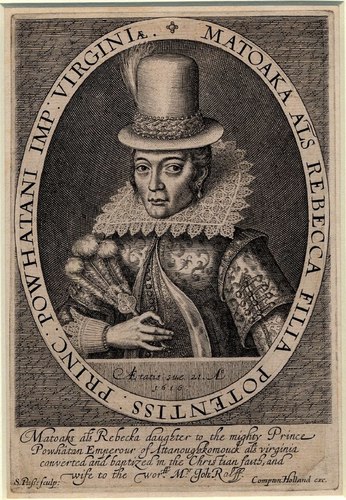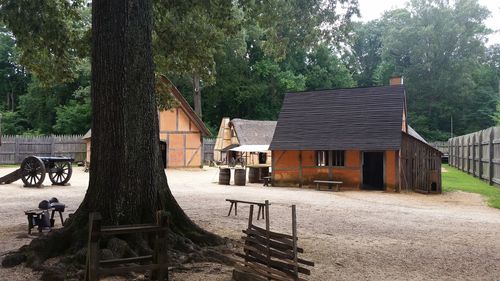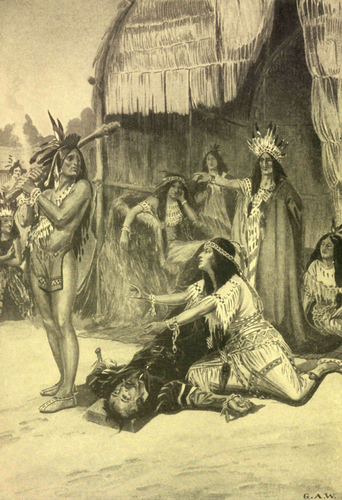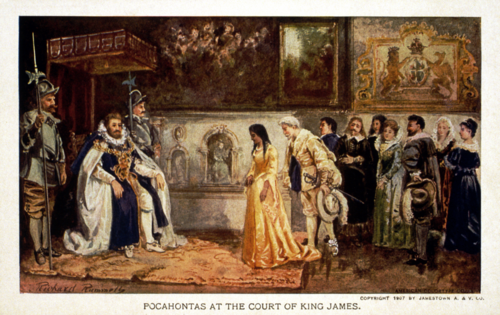Noiser
Who was Pocahontas?
Play Short History Of... Pocahontas
Revered in American folklore yet misunderstood by history, Pocahontas was far more than the peaceful mediator of popular legend. Her true story—one of captivity, conversion, and cultural complexity—reveals a young woman caught at the turbulent intersection of two colliding worlds.

Early Life
Amonute Matoaka was born in 1596 on the coastal plain of (what is now) Virginia. Her father was the paramount chief of the Powhatan tribe, and her mother was one of his many wives. As a young child, Amonute had earned the nickname Pocahontas, meaning “mischievous” or “playful”. Her intelligence and vibrant personality made her a favourite of her father, though life in the tribe was far from easy.
Pocahontas may have been the daughter of a high chief, but that does not mean that she was treated like a princess in our Western sense of the word. The fact that she came from an important line does not mean that she sat around and gave orders.
Camilla Townsend, professor of history at Rutgers University, and author of Pocahontas and the Powhatan Dilemma
The English Arrive
In April 1607, three ships arrived on the shores of Virginia, carrying over 100 men from England as part of the Jamestown expedition. The settlers quickly set up a camp, intending to establish a more permanent site. Ancient trees were felled, and wells were dug in the marshy land. Watching from the cover of the forests, the indigenous people couldn’t believe what they were seeing.
The relationship between the Powhatans and the English was complicated from the beginning. There were moments of cooperation and peace, but these were often overshadowed by deep mistrust and violent conflict. During times of relative calm, Pocahontas spent time with the English and soon became fluent in their language.

Life in this "New World" was far from what the English had anticipated. The land was harsh, food was scarce, and the native people were not the easily subdued population the settlers had expected. Soon, the English, holed up in their fort, were starving. In a last-ditch attempt to survive, a soldier named John Smith was chosen to search the island for food or a camp that could easily be raided.
During this expedition, Smith was captured by a Powhatan hunting party and paraded through several villages before being brought to Chief Powhatan himself. Smith’s book Generall Historie of Virginia, New England, and the Summer Isles, published 16 years later, in 1624, described a striking teenage princess who rescued him at the moment tribal warriors were about to ritually cave in his skull with rocks. According to his account, Pocahontas shielded the young soldier’s head with her own in the nick of time. Whether this story is true has long been debated by historians.

Most scholars think he said it to sell books. It was a very popular motif in mediaeval literature. If a girl loved a guy enough to die for him, then she really loved him. There's a high chance that it simply didn't happen at all.
Camilla Townsend, professor of history at Rutgers University, and author of Pocahontas and the Powhatan Dilemma
Regardless of whether the famous rescue story is true, Pocahontas undeniably played a crucial role as a bridge between the English settlers and the Powhatan people. In fact, it was Pocahontas’ translation skills that enabled Smith to make assurances that the English would halt their violent demands for food.
However, when Smith returned to England and reported his findings, a fresh wave of settler-colonists headed to Virginia, bringing with them a more ruthless strategy for dealing with the Native population. Seeing the chief’s daughter as the key to their plans, the English set their sights on her. Pocahontas was about to become a valuable pawn in their escalating conflict.
Capture and Betrayal
On April 13th, 1613, Pocahontas was captured and forced to stay in the English colony. Here, she met John Rolfe, who quickly fell in love with her. A year later, on April 5th, 1614, 18-year-old Pocahontas married the 27-year-old Rolfe. As part of the union, she was baptised as a Christian and took the name Rebecca Rolfe.
There was no sense of falling in love, of being smitten, certainly not with one's captor. The idea that she would have been wildly in love with someone who had taken her prisoner is literally laughable.
Camilla Townsend, professor of history at Rutgers University, and author of Pocahontas and the Powhatan Dilemma

On January 30th, 1615, ten months after her wedding, Pocahontas gave birth to a son, Thomas Rolfe. As a child of both Native American and English heritage, Thomas symbolised the fragile peace that had been established between the Powhatan people and the English settlers. News of the marriage and the temporary truce it fostered reached King James I of England, who expressed a desire to meet Pocahontas.
On June 12th, 1616, the Rolfes arrived in Plymouth, England. During her time there, Pocahontas was treated as a celebrity, spending much of her visit in the company of the wealthy and influential. However, not all encounters were comfortable—she had a strained reunion with John Smith, the man whose life she was once said to have saved. Perhaps she recalled Smith’s assurances to her father that the English would stop their raids. Whatever her reasons, she screamed at John Smith in front of a large audience.
 In his writings, John Smith later fictionalised her reaction to his betrayal of her people. He reframed it as a spurned lover burning with fury and passion to find her former love alive after believing he was dead. His version certainly put him in a better light than the truth.
In his writings, John Smith later fictionalised her reaction to his betrayal of her people. He reframed it as a spurned lover burning with fury and passion to find her former love alive after believing he was dead. His version certainly put him in a better light than the truth.
Death
After boarding a ship to return to Virginia, Pocahontas fell gravely ill while travelling along the Thames River. Her condition worsened, and she was brought ashore in Gravesend, Kent, unable to continue the voyage. The exact cause of her illness remains unknown. Despite efforts to save her, Pocahontas passed away at a nearby inn, with her husband, John Rolfe, and young son, Thomas, by her side. She was just 21 years old. But her legacy lives on.
The European imperial moment was going to unfold no matter what she did. Pocahontas should be remembered for the extraordinary courage she showed and the efforts she made on behalf of her people.
Camilla Townsend, professor of history at Rutgers University, and author of Pocahontas and the Powhatan Dilemma.